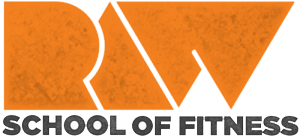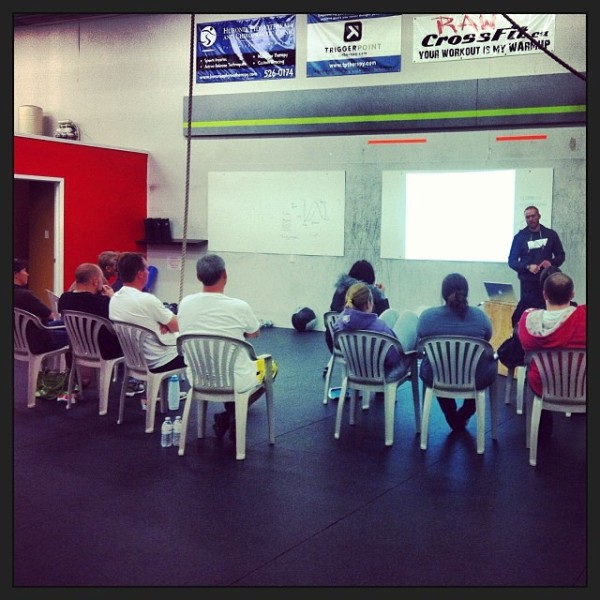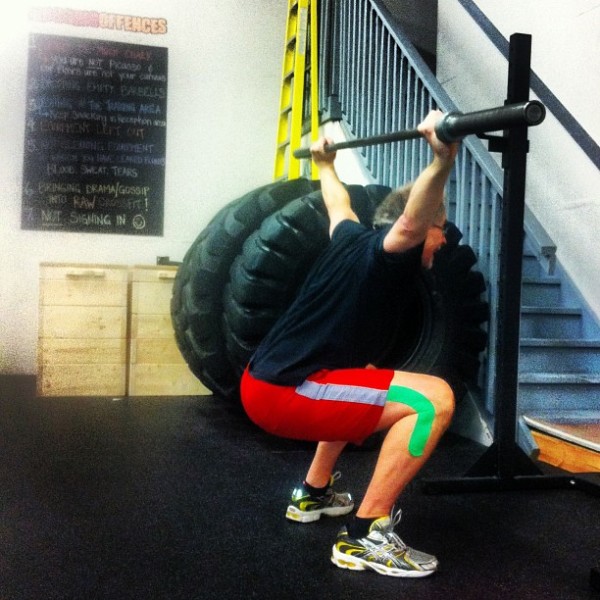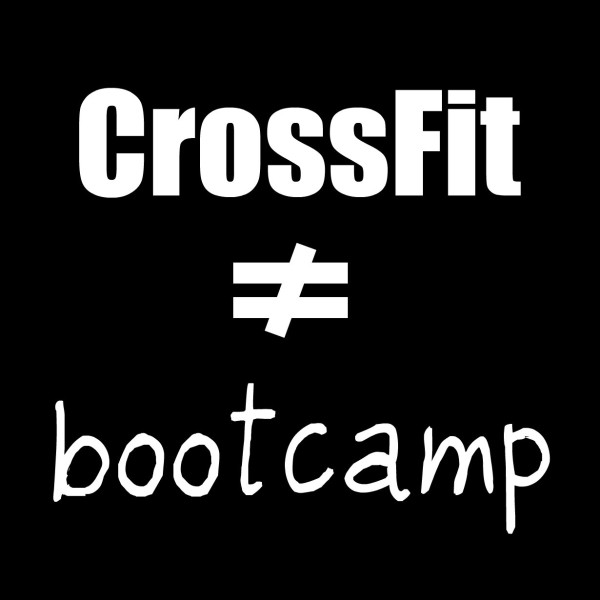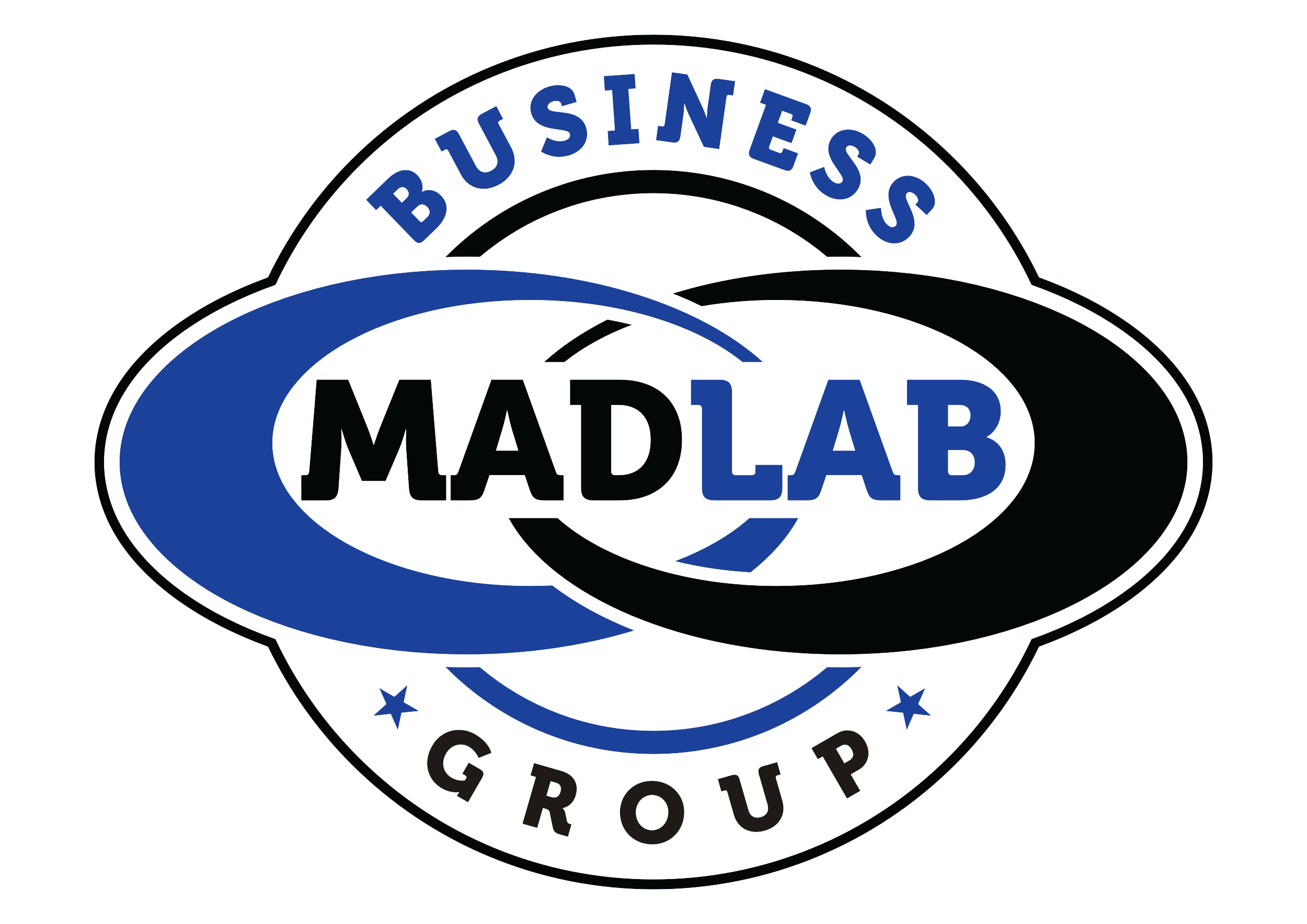09 Dec / 2013
Give the gift of health this Christmas!
It’s that time of year again, cuddling up in your pj’s, with warm tea and… a box of Kleenex beside you as you fester in a fuzzy cloud of nasal congestion, sore throats and coughing up questionable parts of your lungs.
Yep. Cold and flu season. So what should you do if you are unlucky enough to receive this wonderful gift this year? STAY HOME. There is no better gift than the gift of not getting the people in your life sick for the holidays.
As I write this, I am sitting on my couch, curled up in a blanket with the tea whistling at me on the stove. Sure I could’ve mustered my way through a few classes, putting my hands all over the bars, helping you PNF your hammies while you’re lying on the ground hoping I don’t sneeze all over you, but I like you all far too much.
So if you’re feeling a little under the weather over this holiday season, but you just can’t imagine not coming into the box to get your fix? We ask you to please think again.
When your body is trying to fight off infection of some kind, your immune system is in full tilt systemic stress. Now in some cases causing systemic stress to your body (ie. Heavy weightlifting) is needed in order to build strength, however your immune system is not a fan of overloading its workload. It can only handle so much stress at any one time and is already in progress trying to reduce a systemic stress. If you add more stress to it via training (whether it be from lifting or conditioning), you’re going to exacerbate the problem with the additional stress.
Keep in mind that when you do return to your regular routine, you are coming off a deficit and need to ease your way back in. If you typically train at 100%, consider starting out at 70-80% of your usual self and work back up to your usual work capacity.
Your body likes rest. It does well on rest (so actually get strong when you rest). Listen to your body because no one knows it like you do and we’ll see you back at the box when you’re good and ready!
That being said, I’ll see you all in a few.
09 Dec / 2013
Give the Gift of Health this Christmas!
23 Nov / 2013
Why you pay for coaching
Why should you pay for coaching?
With the amount of free information out there these days, it is tempting, and often easy to acquire new movement skills simply from watching a how-to on YouTube. But, in the context of a highly technical skill or set of skills, the clean and jerk or snatch for example, does this method of learning replace being taught by a professional coach?
I would argue no.
Warning, this is a long one. If you want the gist of the argument, skip the the bottom.
Don’t get me wrong, I’ve been there, and still continue to learn new ideas from the interwebs, but it doesn’t, and will never replace learning from an experienced coach.
Let’s go back. In 2006 when I started into my CrossFit adventure, there weren’t too many options to go and learn how to perform functional movements from experienced coaches. Nobody I talked to had ever heard of CrossFit, and there wasn’t a CrossFit box in every town and city (or every street corner as it seems these days). Not that the opportunities to get coached didn’t exist, but they were usually in far away cities, or countries, and cost an arm and a leg. The internet was one of the only accessible avenues to try and learn new movements, and self asses. I would often have to videotape myself performing a rep, watch it, and then try and correct my positioning on the next attempt. It’s a tedious process of back and forth, but I was a University student, and had lots of disposable time on my hands (I probably should have been studying… but in a way, I guess I was).
My first experience with proper coaching came a few months after I found CrossFit as a training methodology. I never “worked out” in high school. I played sports, lots of them, and it left very little time for extra training. Once in University, many of the sports ceased, and I had to look for other outlets. My roommate at the time was into traditional bodybuilding and had a poster of Arnold on his wall. For something to do, I would often go to the gym with him to train. Our program consisted of your classic “globo gym” routine. Back and bi, chest and tri, lots of sit-ups and 20-40 mins of “cardio” after every session (notice the lack of leg days).
After a few weeks of training, I began to notice that I had started putting on bulk weight, and much to my dismay, started to get worse at the sports I was still playing. I couldn’t dunk anymore in basketball, I couldn’t swing my arms over my head to hit a volleyball anymore, and my coordination seemed to always be a bit off.
Back to the drawing board.
I remember doing a Google search for showtimes to the movie “300” . In the search, a bunch of YouTube videos of what the actors did for training in preparation for the movie came up.
* The guy training these actors is Mark Twight of
Gym Jones
. A controversial figure in the CrossFit world depending on who you talk to.
What? Tire flipping, ring work, medballs, bumper plates…that you can drop?
I had never seen these items in a gym before, and never seen anyone training like that. I wanted some.
So I stared to do research. I probably stumbled around the internet for a month before I found this obscure, simple looking website CrossFit.com (there is more content now, but the design literally hasn’t changed since I first visited it). Here I was presented with pictures, videos, and articles about movements that I’d never tried before. There was even a daily workout posted to try and a handful of people (20-40) would post their scores in the comments section to compare against each other (how things have changed since then…).
And so it became my routing to check CrossFit.com daily for the workout and then attempt the closest version I could at the GoodLife I was training at. If I encountered a new movement like a thruster, I would Google it, and try and perform what I saw. I had no coach, and for that matter, I couldn’t even find anyone in the entire gym that had heard of CrossFit. After a few weeks of training that usually left me in a hot sweaty mess on the floor, the threats of being kicked out for lifting barbells above my head, and using chalk on the bars started to come from the gym staff.
One day, I was training later than usual (the gym was open 24h). The place was pretty much a ghost-town besides a few other female students going backwards on the elliptical machines, and this older staffer who I’d never seen in there before. He looked like he has some training miles on him, with a barrel chest, stocky legs, and forearms that resembled Popeye’s. After finishing one of my workouts that included clean and jerks and kipping pull-ups, I saw him get up from the desk where he had been watching me and start walking my way. Thinking to myself “I’m finally going to get the boot from this place”, I was surprised when he made the comment “In the 20 years that I’ve worked here, you’re the first person I’ve ever seen do real work”. I was taken aback. He introduced himself as Dave, and we promptly began discussing what I was doing. Dave told me about his background as an ex-Olympic lifter turned retired powerlifter, and how he thought my cleans would be more efficient if I sat back in my first pull position more and lifted my chest up.
And so my routine changed. I began training late at night with the hope that I would run into Dave again. He wasn’t always there, but whenever he was, he would watch some reps, offer some tips (which almost always lead to a PR, or better efficiency), and let me use chalk on the bars.
Dave was unofficially my first coach.
His tips, and watchful eyes kept me progressing, PR’ing, and injury free for the 6 months I had left at school. I wasn’t aware of it in the moment, but this experience advanced my physical abilities leaps and bounds more than I would have accomplished trying to coach myself from YouTube videos and articles alone. In those late night Goodlife sessions, I learned the value of a good coach.
Fast forward a few years, and I found myself in Vancouver after another successful season as a tree planter. The thing about tree planting is it’s almost 100% oxidative. You walk nearly 16KM a day loaded with up to 40lbs of weight around your hips. When you come home each night, you eat more food yourself than a small family eats in a day, and you inhale carbs and sugar like a vacuum cleaner. At the end of the season, you have a fat bank account, but a skeleton of a body. With no reason to come back to Ontario at the time, I decided to stay out west.
Vancouver is fortunately home to Canada’s first CrossFit affiliate, now known as the MadLab School of Fitness/CrossFit Vancouver . Shortly after my arrival to the island city, I checked out CFV’s website, and promptly booked and intro session that, looking back on it now, changed my life forever.
I was finally in an environment where a coach’s eyes on my movements were just an ask away. Did I have to pay for it? Of course. As in any profession, you get what you pay for. With no job, a ridiculously over priced apartment to pay for, and a quickly shrinking bank account, paying for coaching was hard to justify, but I knew that it was going to be worth it. I stopped eating out, stopped going to the bars (as often), started cooking for myself more, and didn’t spend money on time wasters, or things that weren’t contributing to my health and happiness (these decisions alone, probably had a sizable impact on my physical changes). I found a way around the common excuse of “it’s too expensive” simply by making choices that didn’t drag me down financially, or physically. As the saying goes, where there’s a will, there’s a way. Getting better at my lifts, and movements, in improving my health and fitness was more important to me than watching TV, or new clothes, or weekend parties. It wasn’t easy, but the deeper into my training I got, the better I started looking, the stronger I got, the more it motivated me to stay on that path. The better I got, the better I wanted to get, and the more I found myself saving my pennies so that I could afford a PT session with the lifting coach to refine my snatch, or the gymnastics coach to figure out handstands, or the rowing coach to improve my efficiency.
What I learned from these experiences was that a good coach is worth every cent, and that five minutes with an experienced pair of eyes, is better than hours in front of a computer watching YouTube.
Bottom line, if you are hitting roadblocks with your training, or need/want to learn a new skill, find a coach. If that session leads to a movement change that reduces injury, increases efficiency, allows you to move more weight etc, you have now changed your potential self forever, and the money was well spent.
What I came to understand early in my training career is that you need to take a long-term perspective on training. Movement is living. From the smallest scale of bones vibrating in your ears so that you can hear sound, to gross motor patterns like standing up from a chair, your ability to move yourself will directly contribute to your health, well being, and longevity. Studies have shown that as soon as your ability to move yourself decreases, neuro-degeneration in your brain accelerates. Thus, spending money on a good coach who is going to keep you moving is a sound investment in your future health, both physically and mentally.
[ted id=1261]
If a coach can, in one session, get you to change your movement patterns in a way that allows your hips, or knees , or shoulders, to last an extra 20 years at the end of your life, wouldn’t that be worth it?
If a coach can write a program that builds your strength, stresses your skeleton in an adaptive way and staves off osteopenia, or osteoporosis in the process, wouldn’t that be worth it?
Don’t forget, you are born into this world with one brain, and one body. Why are you spending more money maintaining the car that you will probably sell in 5 years than THE ONLY BODY YOU WILL EVER GET? Why are you buying a new iPhone, but letting your gym membership expire? Why are you not getting a PT session for that movement you’ve been struggling with for months?
In summary, if movement is living, and losing the ability to move yourself has been shown to accelerate aging, your future self implores you to get that coaching NOW. Don’t wait till it’s too late and your back is screwed up, or you’ve sat in an office chair so long that your shoulder mobility is unfix-able. Go find a coach, pay them for their time, and get a high-five from future-you for having the foresight to know that taking care of your body now, is the best health insurance money can buy.
23 Nov / 2013
Why Should You Pay for Coaching?
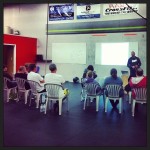 With the amount of free information out there these days, it is tempting, and often easy to acquire new movement skills simply from watching a how-to on YouTube. But, in the context of a highly technical skill or set of skills, the clean and jerk or snatch for example, does this method of learning replace being taught by a professional coach?
With the amount of free information out there these days, it is tempting, and often easy to acquire new movement skills simply from watching a how-to on YouTube. But, in the context of a highly technical skill or set of skills, the clean and jerk or snatch for example, does this method of learning replace being taught by a professional coach?
07 Jan / 2013
The CrossFit Adventure
Please take the time to read “The CrossFit Adevneture” written by RAW member Bory Kowalsky. This well written article explains Borys’ personal journey with CrossFit and why it has become such an important part of his life. Enjoy!
The CrossFit Adventure
Back in September of 2009, after listening with keen interest to Jeff Atwood sing its praises, my son, Will, and I joined RAW CrossFit in Penetangusihene. Am I ever glad we did!
Crossfit training is a relatively new, exciting approach to exercise. A key objective of this approach is to stay abreast of advances in sports science. One of CrossFit’s scientifically supported principles is functional integrated full-body movement. Don’t let these big words intimidate you. The basic meaning is easy to grasp. In a typical weight-lifting program, you work different parts of the body separately. In CrossFit, by contrast, you work the whole body, even if in any given exercise certain body parts are emphasized.
For example, instead of just lifting a weight over our heads while standing, in CrossFit we often do “squat-thrusters.” In this exercise, you go quickly from a deep-squat position, with the barbell sitting in your hands at chin-level, to an erect stance, with the barbell above your head, your arms fully extended, then back down into the deep-squat position, for a number of repetitions. Trust me, when doing squat-thrusters you can feel your whole body working.
Naturally, you do such exercises with weights that are appropriate for you. Although in any class we all do the same workout, we perform it at a level of difficulty that may vary a lot from individual to individual, to ensure that we are improving our overall health and physical fitness and not hurting ourselves. Devin Glage (owner-manager of RAW) and the other instructors work closely with us to figure out the appropriate level of difficulty for each of us. I’m lucky if I can ever go with 60% of the weight “Boneman” Larmand or “Watty” Watson usually uses, but, hey, that’s what works for me!
There’s more to it. Besides warm-ups, cool-downs, and mobility exercises to help you limber up the muscles, a sizable chunk of class-time is devoted to learning proper technique and good form in each exercise. The benefit is two-fold. You minimize the chances of injury. And you actually become more adept in the use of your body.
Take chin-ups. You wrap your hands around the bar and pull straight up, till your chin touches the bar, then drop down, and repeat, right? Well, in crossfit we do sometimes do it that way, to build upper-body strength. But you also learn other, more exciting ways. One is the “butterfly” – a fluid, graceful circular motion, beautiful to behold when done right, as, say, Kaylee “KaySlay” Heath does it. This way you get many more reps in, your whole body is much more actively involved, and besides increasing your strength, you acquire greater physical versatility and skill.
Another key principle: every day a different workout. The idea here is to ‘surprise’ your muscles, so they’re always adapting to the ever changing demands being placed on them, instead of ‘getting used to’ routinized movements and thus not being fully tested – which is apparently what happens when the same exercises are done day in, day out. A third principle is workouts of relatively short duration but high intensity. These strategies too make for more rapid increase in physical strength, versatility, and stamina.
Sure, there are days when we go home from RAW feeling pretty sore. Sometimes we come to the next class complaining of muscle aches, groaning and moaning laughingly, and jokingly flinging little verbal jibes at our seemingly hard, merciless taskmasters. “That’s good pain, part of the process,” we are gently reminded by our instructors. “Those aches are signs of muscle-rebuilding, which translates into increases in strength.” Though I’m no expert in such scientific matters, I believe this claim to be true, because it’s borne out by the progress I see the regulars making in the strength department.
Strength, stamina, agility, versatility, adeptness, gracefulness – these are some of the buzzwords of CrossFit training. I for one have no doubt of its overall effectiveness. In his last year of high school, Will did not play school basketball. So the amount of ball he was playing before OBA kicked in dropped sharply, down to one match a week in the local men’s league. Yet within a few short months the level of his play had risen dramatically, maybe by 10-15%. The only possible explanation was CrossFit. It rapidly made him stronger, faster, fitter, more agile and versatile, qualities indispensable to excellence in basketball, as in any sport. I’m totally convinced Will’s CrossFit training was a major reason he could make an ACAA university basketball team and then contribute significantly to its successes from the outset. For that matter this year his team, the STU Tommies, won first place in the ACAA Regionals and a bronze medal in the CCAA Nationals, and Will’s sterling performance in both championships was definitely a factor.
As for me, I can shovel the snow on my drive and rake the leaves front and back a lot faster than I could in the pre-CrossFit era of my life. Joining RAW CrossFit is one of the best decisions I’ve ever made. And not only for my own sake.
Borys Kowalsky May, 2012
Borys M. Kowalsky holds a Ph.D. in political science from University of Toronto. Formerly a teacher at private schools in Toronto and Oakville, he is now an independent scholar-lecturer. He resides with his family in Tiny.
24 Sep / 2012
Positive Constraints
I am stealing this concept from a recent interview that I watched featuring Tim Ferriss , and professional photographer Chris Jarvis . The context of the positive constraint idea in their discussion was surrounding how to take excellent pictures, and both Tim and Chris agreed that often the best photographs don’t come from high end fancy cameras and gear (don’t get me wrong, they’re great if you know, how to use them) but rather from simple cameras and excellent composition . In other words, you can’t buy your way to great pictures, you actually have to take good pictures. Often, when you are forced into working wiihn constraints, your pictures improve, because you rely on good subjects and good picture composition rather than the fancy features of your $3000 set-up.
You may be asking yourself how this applies to CrossFit?
Movement in general is very much framed by many positive constraints:
Gravity.
Economy of movement (i.e. technique).
Injury and inflexibility.
Body dimensions.
Time and space.
Fear.
You goal as the mover is to take these positive constraints and learn to work within them.
If you were to pick one word to describe anyone who society regards as being an amazing mover, or top athlete, what would it be?
Might I suggest the word: Effortless
How is it that the best movers (usually those winning at their respective sports) make it look the easiest? You would think that they are the are the ones trying the hardest…, but I would argue that these people, whether they know it or not, have found the sweet spot in their positive constraints. They have struck a balance between the forces of nature that are given to us for free (gravity, muscle elasticity, ground reaction etc.) and technique, or more specifically, the body positions that allow these forces to act on us most efficiently. Said another way, these movers are much closer to their ideal form than the rest of us, and thus have to work less due to their high movement efficiency.
While what constitutes “ideal form” is hotly debated within specific sports, there is a general consensus however that every human individually has one best way to perform any movement. Think back on your own experiences and you can probably identify a few situations while watching an amazing mover that just made you stop and think WOW. Humans have this innate ability to recognize high quality movement. Studies have shown that we evaluate things like attractiveness and compatible genes by how well a prospective partner moves.
Take the two video below for example.
Knowing nothing about their passed history, or whether they’ve had professional training, one just “looks” better than the other. In terms of athletic endeavors, the better your movement looks, typically the closer you are to your ideal form. Keep in mind that perfect form is a journey with no real end point. Ideal form is what we are always striving to achieve, but we will never actually attain. We will always be bound by constantly changing positive constraints.
Your job as the mover is to apply the best technique you can within the constraints given to you.
To reiterate, your progression as a athlete should follow this very structured path: Technique>Consistency>Intensity
Focus on your movement and things like speed, power, and strength are just a matter of time.
Photo credit: John Lemieux
17 Sep / 2012
Character vs. Personality
There was a time when character governed most of a person’s actions and decisions. We adhered to an internal code of conduct not because it was expected of us, or made us “look good”, but because it was the
right thing to do
, and that meant something.
We were serious, honest, disiplined, honourable, and respected others as well as ourselves. Most importantly, we acted this way in public, but also in private when no one was watching.
In today’s fast paced world, obsessed with fame, fortune, and success, we get conditioned from our earliest of educations to become performers. To behave a certain way because that is what society expects. We care mostly about what people think or say about us, and we tweak how we act, talk and dress to make sure we present ourselves in a way that aligns with personality we wish to have.
The question is, does the world see you as the person you want to be, or the person you are?
The key diffence here is that character is a reflection of your actions and internal standards that you set for yourself regardless of outward expression. Personality is what you outwardly express in an effort to shape how the world sees you.
Character is like a mirror. Personality is a flashlight.
In the context of CrossFit, how you act in the gym, says a lot about your character.
We all like to win at workouts, but if you let winning become a dominant part of your personality over a character trait like integrity, it can get you into trouble.
When you short a movement, or cheat on your rep count, your winning personality may tell you “no one will notice, and I’ll finish first” , but be sure, everyone notices . We may care too much about our own “nice guy” personalities, or compromising our relationship with you to say something about it, but we see it. Everyone does. And in your attempt to satify your ego and keep your “I’m a winner” personality act going on the surface, you have in fact degraded your character, and proven to anyone watching, that you lack honour and integrity.
Much like trust, character traits are hard won, and easily lost.
Thus, there is much to be said about actions speaking louder than words.
In a world where fast talking salesman ram marketing down our thoats at every opportunity, most people’s bullshit-meter is fairly fine tuned. We are very good a sensing when we are being duped, sold, or scammed.
Comparatively, if you put Rx on your WOD score when you know you didn’t lock out your dips, or didn’t get your chin over the bar on every rep, all you do is let your personality and your ego get in the way of integrity, and degrade your character.
How you do anything, is how you do everything. If you’re shorting your reps in your workout, what else are you shorting in your life?
Strive for good character in the gym, and you will find these traits echo in real life.
05 Sep / 2012
CrossFit ≠ Bootcamp or [Insert knock-off here]
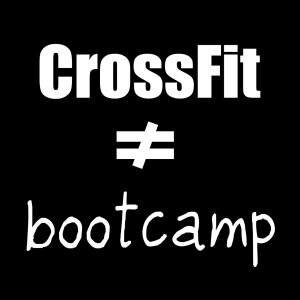 I suppose this post could have equally been titled “Participation ≠ Progression”.
I suppose this post could have equally been titled “Participation ≠ Progression”.
With the explosive growth of CrossFit around the world, there has been a marked shift in the fitness industry. The old model (fill a retail space with fancy equipment and a juice bar, then convince as many people as you can to sign-up for a contract and hope that they never actually show up) is broken. The big chains, known to the CrossFit world as GloboGyms, have started to notice their members flocking to the local industrial district to slog it out with real strength tools like ropes, rings, tires, and bumper plates (that you are actually allowed and encouraged to drop!).
Big Fitness, not one to just lay down and die, has begun a counter attack on the fitness industry that would make Sun Tzu proud. In an effort to keep friends close, but enemies closer, they have begun creating all sorts of CrossFit rip off programs. This is not just a trend exclusive to GloboGyms however, all types of bootcamps, and Tabata classes etc, have sprung up in fitness studios around the world, with some of their marketing efforts ranging from near trademark infringement to down right content theft.
A recent example comes from our brothers to the north at Catalyst Gym in Sault Ste. Marie. Not having any pictures of people working out in a group of their own (community can’t be faked), a local GloboGym decided to steal a picture off Catalyst’s website to use in the marketing material for a fitness challenge they were hosting.
While imitation is the sincerest form of flattery, the issue is that just because you call it something similar, does not make it the same. What these knock off group classes fail to understand is that real fitness requires you to administer acute high stress for short time periods. This type of stress usually requires the use of close to maximal efforts, and tests of strength as well as hands on coaching and drilling of proper technique. Does this sound like something you experienced the last time you did Zumba?
Dancing around for 40 mins, or using light weights so you don’t get bulky will definitely make you sweat, but does sweating = fitness or results? I’ve been in a sauna before, and it didn’t make my mile time faster, or my pull-ups stronger.
As I’m sure many have experienced, participation in a “fitness” class does not equal fitness. CrossFit is hard, because hard is what works (Google “physiological adaptation”) The right kind of hard, intelligently administered for the right period of time can cause your body to make monumental changes to both it’s form and function (Google “hormesis”)
While fun and social, these “fitness” programs ultimately prey on the fact that you think you’re getting fit, but never actually do. As a personal anecdote, we were recently at the CanFit Pro Show in Toronto where this fact was glaringly obvious, and humorously ironic. A show dedicated to the fitness industry, lacking basic understanding of how to create it… except of course for the CrossFit section (mildly biased opinion, but true).
Relegated to a small corner away from all the Cybex machines, bosu balls, and pyramid scheme meal replacement brands pimping BMWs, was the Sweat RX Magazine Canadian CrossFit Championships. Here were athletes testing fitness. Not caring about cellulite, total body cleanses or how to tone their inner thighs, but rather how much weight they could get overhead, or how fast they could run, or whether they could pull themselves up over a bar.
Now, don’t get me wrong, CrossFit is not the Holy Grail of fitness. It has it’s flaws, and in some cases is administered poorly or even dangerously (some CrossFit gyms think it’s okay to throw people straight into Group Classes with little to no training). The main difference is that CrossFit is based on a model that is ultimately focused on your health and fitness. We focus on community and personal growth. We know that cardio is just a function of strength, not a separate way to train. We know that words like cellulite , firming and toning are marketing myths created to make you feel insecure about your body so you’ll buy into the latest fad diet/Body by shake/fitness gimmick.
Deep down though, I think you know the truth. Nothing good comes from easy.
If you are being sold fitness as easy, you are being duped, had, scammed, conned, etc,.
